- Home
- Loren D. Estleman
Valentino: Film Detective
Valentino: Film Detective Read online
Valentino:
Film Detective
Stories
Loren D. Estleman
Contents
Preface: Hostage to Hollywood
Dark Lady Down
The Frankenstein Footage
Director’s Cut
The Man in the White Hat
Picture Palace
The Day Hollywood Stood Still
Greed
Bombshell
Shooting Big Ed
Garbo Writes
The Profane Angel
Wild Walls
Preminger’s Gold
The List
A Biography of Loren D. Estleman
Preface: Hostage to Hollywood
MY FIRST BABYSITTERS WERE Clark Gable, Katharine Hepburn, Boris Karloff, and Rin-Tin-Tin.
Karloff in particular was a smuggled sin. My parents seldom censored their children’s entertainment, but Shock Theater, where Karloff and Bela Lugosi and Lon Chaney, Jr. and their alter egos Frankenstein, Dracula, and the Wolf Man lived, aired on TV past our bedtime Friday night. My brother and I lived for those occasions when our parents went out, leaving our grandmother to look after us; she could always be depended upon to fall asleep by 11:30, just before that hideous human skull sprang onscreen and the creepy voice of the announcer advised us to lock our doors and close our windows. (Those Universal monsters are still my warm-and-fuzzies. The first time I saw Frankenstein, my pet Chihuahua-terrier, Pepi, was curled up in my lap, and I still feel her there whenever Colin Clive throws the switch on that massive inert form stretched out on his surgical table.)
Movies were all over network and local television in those days. They ran in the morning and afternoon, ruthlessly mutilated to sell used cars and storm windows, kept people home Saturday night, and sprawled across most of the day Sunday with fifteen-minute station breaks during which the garrulous hosts answered movie-trivia questions put to them by viewers on the telephone. Johnny Weissmuller wrestled crocodiles on a continuous loop, Shirley Temple danced her cute little dimpled butt off day after day, and James Cagney ran up the body count on the South Side regular as the mail. The original King Kong always wrapped up with enough daylight left for me to risk my fool neck swinging from the rafters in the barn out back in pursuit of my own version of Fay Wray.
The TV was black-and-white, but that didn’t matter because so were most of the movies. That was in the fifties and early sixties. However, as late as the mid-seventies, CBS ran thirty-year-old films after the Eleven O’clock News in competition with talk shows on the other channels. The program director of a Detroit station even got the bright idea of screening the first half-hour of a movie at eleven, then breaking for thirty minutes of news, weather, and sports before returning to the feature. The experiment lasted about three weeks; I assume the program director didn’t.
Cable and satellite ended this Hollywood parade in the 1980s. The movies decamped to the premium channels, and the only way most of us could enjoy a rousing western or gaze upon Hedy Lamarr’s flawless face was to pop for an exorbitant package or embrace the nascent concept of home theater.
A word about videocassette recorders and DVD players.
Yea!
TV Guide once published an article about Howard Hughes and his solution to the dearth of his kind of entertainment on TV at 2:00 A.M., when he finished buying countries and disinfecting his environment and wanted to relax: He bought a local station, stocked it with westerns and aviation films, and called the night man there to tell him when he was ready to watch and what feature to put on. If he became bored with one, Hughes would call the station again to yank it and substitute something else. This was a flagrant violation of FCC regulations—the airwaves belong to the public, after all, or did then, before the authorities cracked down on satellite hackers for theft of services. I personally thought it was neat. I wanted to be Howard Hughes.
Thanks to modern technology, I can be. The generation that has grown up since the first affordable VCR appeared on the market will never know the wonder connected with being able to watch any movie one wants, any time one wants to watch. Even so, I put off making the purchase, waiting for prices to come down, until Ted Turner began colorizing films originally released in black-and-white to reach a younger audience. Fearing that unadulterated Casablancas and Citizen Kanes would soon be extinct, I bit the bullet, bought the doohickey, locked myself up with it for twenty-four hours while I figured out how to set the clock, and pioneered the home theater before the term existed, designating a room just for watching movies and filling the shelves with all my favorites.
Any collector will sympathize. The urge to amass begins with the delusion that if I don’t save all this crap from destruction, no one else will. That’s how people manage to suffocate themselves under tons of newspapers they can’t bring themselves to part with.
Movies, I love ’em. Old-time horror flicks, musicals, horse operas, prison pictures, classic science fiction, gangster sagas, Garbo weepies, Elvis playing guys named Steve and Rick and Lucky. I like a lot of the new stuff nearly as well as some of the old, but don’t ask me to watch Adam Sandler remaking a Gary Cooper landmark or any horror film made since The Exorcist; both make me throw up.
My family bonded in front of Saturday Night at the Movies, and I got to know my father after he retired on a disability, watching afternoon features with him when I got home from school and staying up late with him to catch bottom-of-the-bill fare on obscure stations the antenna couldn’t receive during the day. We developed the habit of reading the closing credits to identify the character actors we saw so often: Barton MacLane, Joe Sawyer, Beryl Mercer, Allen Jenkins, Jo Van Fleet, who worked so steadily, appearing in ten or more pictures a year, you just knew they always showed up on time, on their marks and sober, and probably lent a lot of money to the lead players. I read all the credits to this day, even when they run twenty minutes to include the caterers and limo drivers. My wife shares the practice, and we’re frequently the last people in the auditorium, with the cleaning crew fuming, waiting to get at all those wads of gum before they petrify. (We wonder what the negative cutter does now that movies have gone digital.)
What I’m saying, to paraphrase Mae West on the role of Diamond Lil, is I’m Valentino; he’s me, and we’re each other. Mind, I’m no film detective. That’s a specialized skill, and Kevin Brownlow, the genius behind the greatest cinema finds of the last century and this, has it more than anyone else, inspiring the creation of Valentino. But the fellow with the name that fairly drips Hollywood has my compulsive obsession with movies and movie lore. Cut us, we bleed pure popcorn butter. We would rather watch a star at work than be one, and if The Divine Woman ever resurfaced and showed on Channel Six on our wedding night, we’d be divorced by morning. Valentino loves his work, and I love mine. Having explored the birth of Hollywood in detail in Billy Gashade and The Rocky Mountain Moving Picture Association and the murky world of film noir at length in Never Street, and peppered my books and stories with motion picture references for thirty years, I write off a percentage of my viewing equipment and film library every year with a clear conscience.
Valentino evolved a good deal before his first appearance in “Dark Lady Down.” Years earlier, in a raw version of that story called “Death of a Vamp,” his name was Lawrence Little, and he was a former child star known first as Baby Larry and Little Larry Little. The story never sold, and neither did a portion of a novel featuring him, The Frankenstein Imperative—presented here, in drastically altered form, as “The Frankenstein Footage.” One editor complained that the character’s name was distracting, especially in sentences that began like, “Little knew …” Looking back, I’m happy the series never took
off in that incarnation. A child actor from Hollywood’s Golden Age would be getting too long in the tooth about now to run around sleuthing after lost films and murderers, and in any case “Vamp,” with its storyline centering on a reclusive silent star, bore too close a resemblance to Sunset Boulevard for comfort. Also, at ninety-nine and counting, even the youngest players from that period have grown too old to commit a satisfying murder or to bother murdering. Better the victim should be an aging femme fatale from the heyday of noir.
Good-bye, then, to Lawrence Little and his early career in films. But Valentino still wasn’t Valentino, not yet. At one point I considered calling him Hitchcock, but since I hadn’t decided to submit his first adventure to Ellery Queen’s Mystery Magazine (or that it would be accepted there), the prospect of offering it to Alfred Hitchcock’s Mystery Magazine and the inevitable name confusion it would cause set me to thinking the thing through.
Hollywood would be a very different place without Rudolph Valentino having participated in it. The surname also has an exotic sound—romantic, on the very face of it—and the opportunities for comedy were unlimited. He would be forever distancing himself from the star of The Sheik (in the presence of those familiar with screen history) or from the fashion designer (for those whose entertainment education begins and ends with Access Hollywood). With a last name like that, there never was a need to give him a first, and giving him a slight physical resemblance to the original Valentino sharpened his character by adding to his travails and removed the need to find new ways to describe him physically. (“You look like him,” new acquaintances declare; differing versions of that. Next line.)
The idea was a natural, and after nearly ten years I can’t get over the fact that no one else beat me to it. Mystery writers have plundered Hollywood and the cinema of plots for decades, but it never occurred to any of them that an archivist whose job is to circle the globe assembling bits and pieces of celluloid is uniquely suited to solving puzzles connected with murder. Brownlow’s own recollections, in The Parade’s Gone By and his introduction to Abel Gance’s shooting script for Napoleon, on his twenty-year search for every extant inch of the director’s silent masterpiece, culminating in its triumphant second premiere in 1979, reads like a vintage detective story.
The movies and literature—for want of a term less lofty—have been joined at the hip since before D.W. Griffith invented the close-up. Screenwriters have adapted the heart out of all the good books and most of the bad, sometimes ignoring the polite gesture of paying their authors, and writers of books have in turn borrowed heavily from the cinema, employing wide shots and tracking, whether or not they were aware of the debt. I discovered Raymond Chandler through a beat-up 1963 paperback of The Little Sister in the nickel bin of a used bookstore, and goggled at his cynical view of Golden Age Hollywood: “… a square building … with small white leaded bay windows and a Greek porch over the front door and what looked, from across the street, like an antique pewter doorknob… . I went for the knocker, but they had thought of that too. It was all in one piece and didn’t knock.” And: “Wonderful what Hollywood will do to a nobody. It will make a radiant glamour queen out of a drab little wench who ought to be ironing a truck driver’s shirts, a he-man hero with shining eyes and brilliant smile reeking of sexual charm out of some overgrown kid who was meant to go to work with a lunchbox. Out of a Texas car hop with the literacy of a character in a comic strip it will make an international courtesan, married six times to six millionaires and so blasé and decadent at the end of it that her idea of a thrill is to seduce a furniture mover in a sweaty undershirt.” Lesser lights such as Jackie Collins and Jacqueline Susann built whole careers out of Tinseltown bitchiness, and Stuart Kaminsky, a genuine insider, has delighted legions with private eye Toby Peters, confidant to the likes of Errol Flynn, Mae West, and Groucho Marx; but it was Chandler—with a nod to Nathanel West’s shockingly jaundiced Day of the Locust—who stripped away the glitter and exposed a grubby factory town, laced with larceny and license.
But this is not a treatise on the history of pictures and penmen. There’s enough material there to fill a book ten times as long as this one. Suffice it to say that the relationship is long and intimate.
Enough with the overture. The lights come down, the gauzy crimson curtain slides away from the screen—a honking big one, I hope, not that basement window in the little freight car where Merchant Ivory gets drowned out by the latest excrescence from George Lucas in the theater next door. Sit back, take your shoes off, and don’t forget to take advantage of the refreshment opportunities available in the lobby.
Loren D. Estleman
Dark Lady Down
“VALENTINO?” SAID THE WOMAN.
“Valentino,” said Valentino.
“Seriously?”
“Unfortunately.”
She chuckled. The famous husky voice had been further roughened by fifty years of cigarettes. “I was told you died the year I was born.”
“That would be a mistake. I’m a big fan.”
“You needn’t flatter me, Mr. Valentino. I’ve already decided to receive you tomorrow afternoon. Would one o’clock be convenient?”
He said it would be if it was for her, and they broke the connection.
The next day, Valentino put on his best summer-weight suit with a pale blue shirt. He hesitated over whether to wear a necktie, then selected one of the handful he kept for excursions east. He always felt conspicuous wearing one in southern California, but the Old Hollywood had different standards. He wanted to make a good impression.
The house was one of the stately sprawling old Spanish villas pegged to the side of Laurel Canyon. Climbing the long flight of flagstone steps to the front door, Valentino felt a niggling sense of déjà vu. He wondered where he had seen the place before.
Then he remembered: It was the house where Ivy Lane had shot Cornel Wilde in Switchback. These were the very steps where Wilde had stumbled and then rolled down, finally landing on his back in the street. His costar had either lent her own home to the production or had become enamored with it during filming and bought it later. It looked less forbidding in color than it had in black and white. She had removed the sinister hedges and planted flowers in boxes under the windows.
Immediately after he rang the bell, the door was opened by a man whose broad bulk filled the opening as thoroughly as a second door. He wore a tan poplin sportcoat over a white knitted shirt, open at the neck to show his smooth tanned throat.
“Are you with the police or the coroner’s office?”
The voice was a deep drumroll. Stepping back, the visitor stared up into a pair of nostrils like ship’s funnels and said, “Neither. I have an appointment with Miss Lane. The name is Valentino.”
The man-mountain rumbled. The noise seemed to indicate amusement. “Yeah. You sure look like him.”
Sadly, that was true. His light olive coloring, clean profile, and the glossy black hair that he could only control by brushing it straight back from his forehead were a coincidence that vexed him constantly. As far as he knew, there was no blood relationship between his family and the silent-film star, but all the same he had had to put up with lame jokes all his life. In college he had been known as the Sheik, a nickname he would likely still be struggling under if the new generation’s knowledge of the cinema of the past didn’t stop at Star Wars.
“Please tell Miss Lane I’m here,” he said.
“All her appointments are canceled, sorry.” The door started to close.
A female voice called from the other side of the poplin sportcoat. “Who is it, Vivien?”
Vivien?
“Someone who says his name is Valentino, and it fits. Come to see Miss Lane. I told him—”
“Yes, I heard that part. Show him in.”
The giant hesitated, then moved to one side. Valentino stepped over the threshold and surrendered his hand to a solid grip belonging to a woman nearly as tall as he. She wore large red-framed glasses and a tailore
d red suit without a blouse that did wondrous things for a figure that didn’t seem to need to have much done for it. Her honey-colored hair was caught loosely behind her neck.
“I’m Georgia Tanner, Ivy Lane’s attorney. She mentioned your conversation.”
“Then I won’t have to explain myself,” he said.
“Something about one of Ivy’s films.”
“Shades of Night. It was about a plot by American Nazis to assassinate the president. RKO withdrew it from theaters when Roosevelt died and shelved it. I fully believe Miss Lane’s print is the only complete one in existence. If it’s for sale I’d like to make an offer.”
“Ah. You’re a collector.” She might have said, You clean toilets.
“Not personally, although I suffer from most of the symptoms. I’m a film historian, under contract to UCLA. My job is to locate and acquire rare motion pictures so they can be preserved for future generations to see and appreciate.”
“It sounds a little like detective work.”
“Sometimes it’s exactly like it. Some films seem just as determined to stay lost as any fugitive from justice.”
“A dick,” rumbled big Vivien. “I said it the second I saw him.”
Valentino looked at him, and felt a shock of recognition. Now that there was distance between them, he could take in the huge man’s mane of thick black hair, graying now, square chin, and eyebrows that collided over his nose. The name hadn’t been Vivien. In the early sixties, he was billed on drive-in screens across the country as “Bull” Broderick, one of the later, dumber Tarzans. The foyers and pantries of Greater Los Angeles were littered with more half-forgotten faces than a cutting room floor.
The film detective glanced at his watch. He had a man to see in Thousand Oaks about sixty feet of an undiscovered Chaplin two-reeler at four o’clock. “Could I see Miss Lane now?”
The professional smile left the attorney’s face. Watching her, Valentino wasn’t sure it had ever been there.

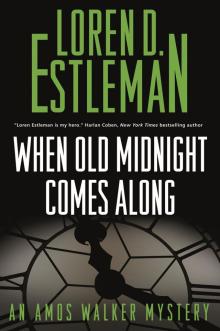 When Old Midnight Comes Along
When Old Midnight Comes Along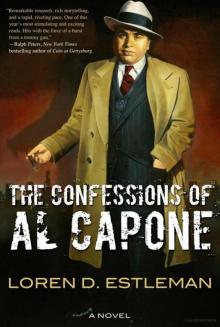 The Confessions of Al Capone
The Confessions of Al Capone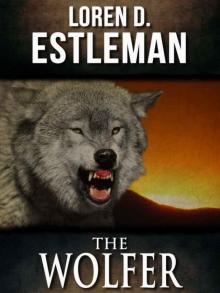 The Wolfer
The Wolfer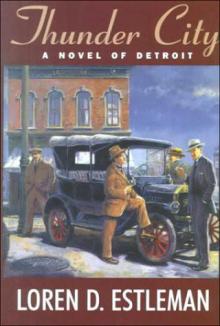 Thunder City
Thunder City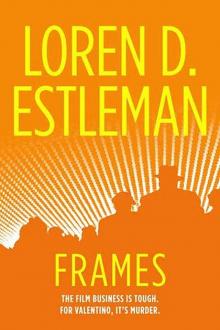 Loren D. Estleman - Valentino 01 - Frames
Loren D. Estleman - Valentino 01 - Frames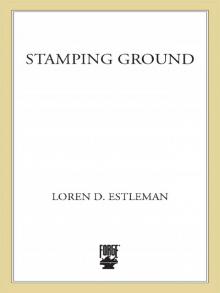 Stamping Ground
Stamping Ground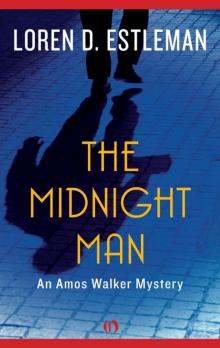 Midnight Man
Midnight Man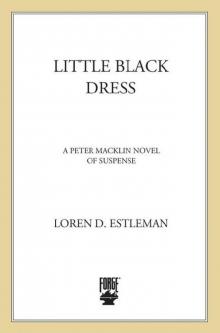 Little Black Dress (Peter Macklin Novels)
Little Black Dress (Peter Macklin Novels)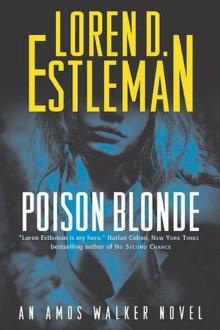 Loren D. Estleman - Amos Walker 16 - Poison Blonde
Loren D. Estleman - Amos Walker 16 - Poison Blonde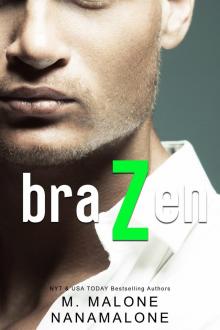 Brazen
Brazen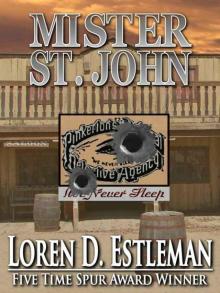 Mr. St. John
Mr. St. John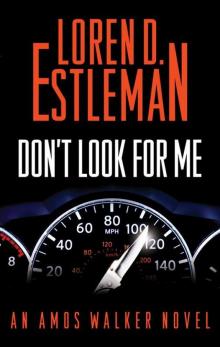 Don't Look for Me: An Amos Walker Novel (Amos Walker Novels)
Don't Look for Me: An Amos Walker Novel (Amos Walker Novels)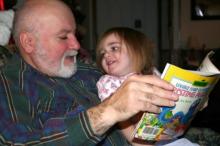 Stress
Stress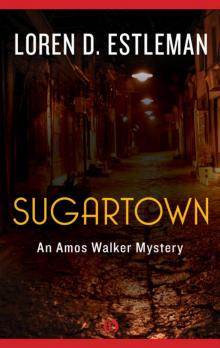 Sugartown
Sugartown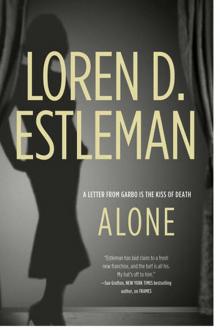 Loren D. Estleman - Valentino 02 - Alone
Loren D. Estleman - Valentino 02 - Alone Sweet Women Lie
Sweet Women Lie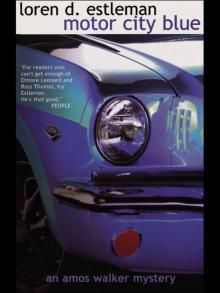 MOTOR CITY BLUE
MOTOR CITY BLUE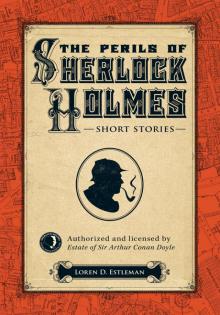 The Perils of Sherlock Holmes
The Perils of Sherlock Holmes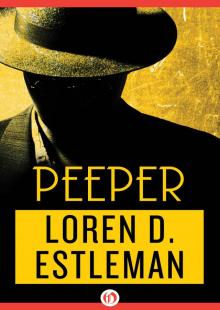 Peeper
Peeper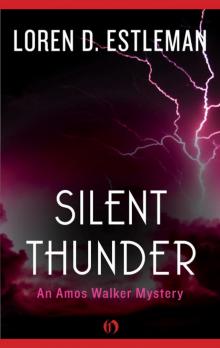 Silent Thunder
Silent Thunder Port Hazard
Port Hazard A Smile on the Face of the Tiger
A Smile on the Face of the Tiger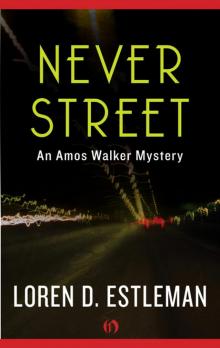 Never Street
Never Street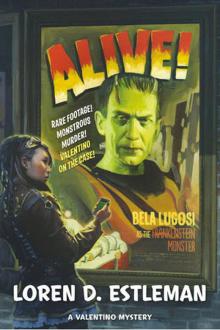 Loren D. Estleman - Valentino 03 - Alive!
Loren D. Estleman - Valentino 03 - Alive!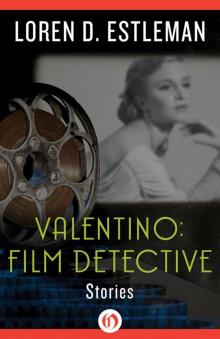 Valentino: Film Detective
Valentino: Film Detective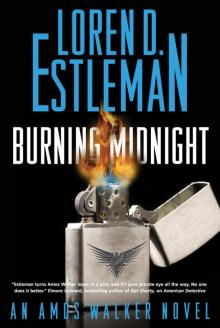 Burning Midnight
Burning Midnight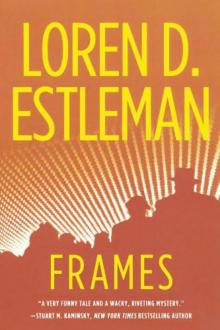 Frames
Frames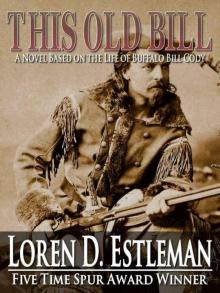 This Old Bill
This Old Bill You Know Who Killed Me
You Know Who Killed Me Ragtime Cowboys
Ragtime Cowboys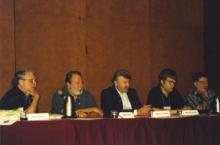 Edsel
Edsel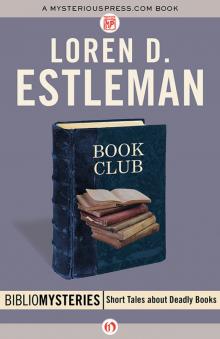 Book Club
Book Club Alive!
Alive!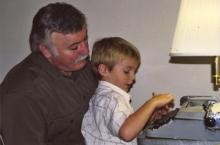 Whiskey River
Whiskey River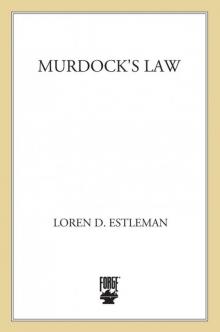 The Murdock's Law
The Murdock's Law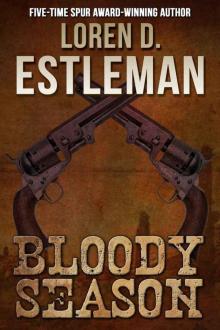 Bloody Season
Bloody Season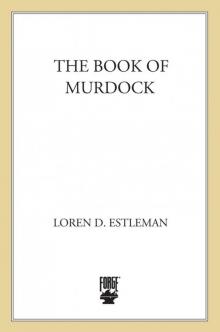 The Book of Murdock
The Book of Murdock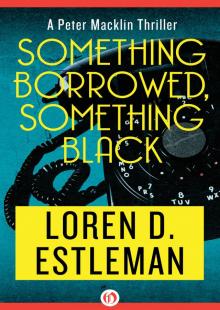 Something Borrowed, Something Black
Something Borrowed, Something Black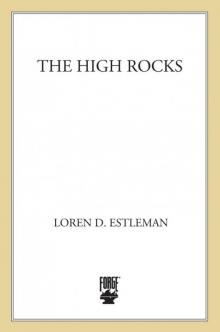 The High Rocks
The High Rocks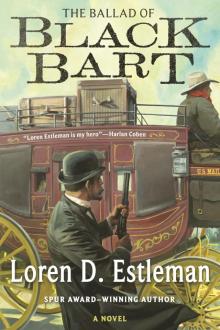 The Ballad of Black Bart
The Ballad of Black Bart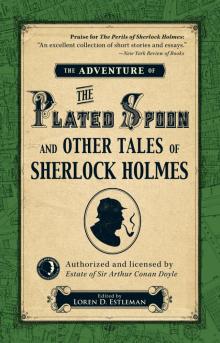 The Adventure of the Plated Spoon and Other Tales of Sherlock Holmes
The Adventure of the Plated Spoon and Other Tales of Sherlock Holmes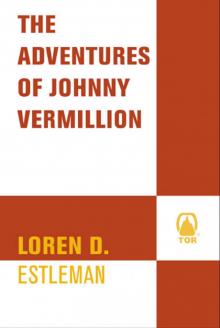 The Adventures of Johnny Vermillion
The Adventures of Johnny Vermillion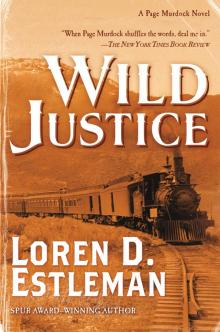 Wild Justice
Wild Justice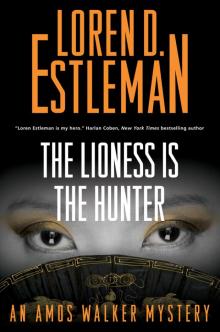 The Lioness Is the Hunter
The Lioness Is the Hunter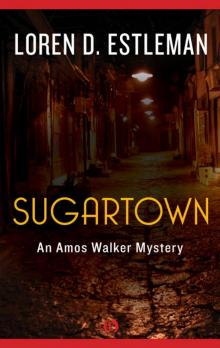 Sugartown: An Amos Walker Mystery (Book Five)
Sugartown: An Amos Walker Mystery (Book Five)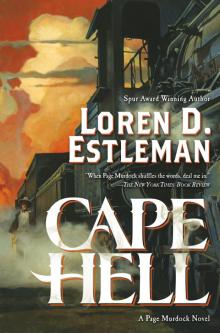 Cape Hell
Cape Hell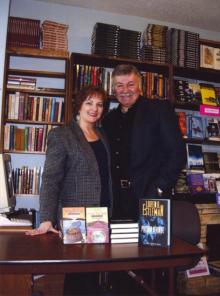 Downriver
Downriver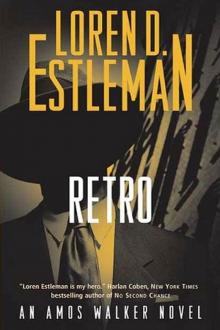 Loren D. Estleman - Amos Walker 17 - Retro
Loren D. Estleman - Amos Walker 17 - Retro Detroit Is Our Beat
Detroit Is Our Beat Jitterbug
Jitterbug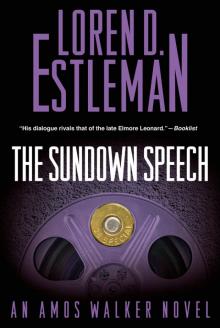 The Sundown Speech
The Sundown Speech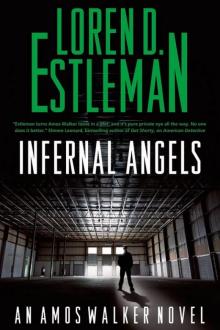 Loren D. Estleman - Amos Walker 21 - Infernal Angels
Loren D. Estleman - Amos Walker 21 - Infernal Angels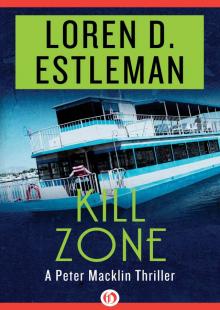 Kill Zone
Kill Zone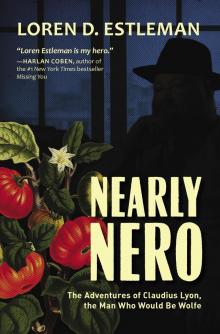 Nearly Nero
Nearly Nero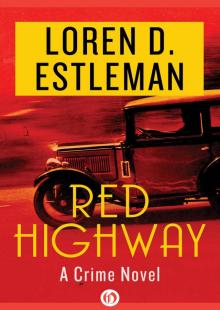 Red Highway
Red Highway American Detective: An Amos Walker Novel
American Detective: An Amos Walker Novel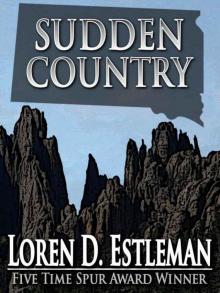 Sudden Country
Sudden Country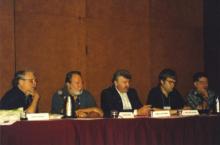 King of the Corner
King of the Corner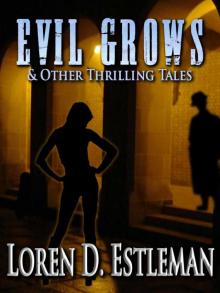 Evil Grows & Other Thrilling Tales
Evil Grows & Other Thrilling Tales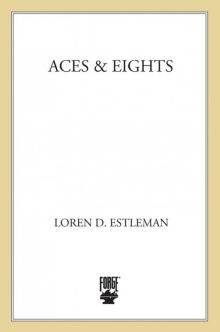 Aces & Eights
Aces & Eights Black and White Ball
Black and White Ball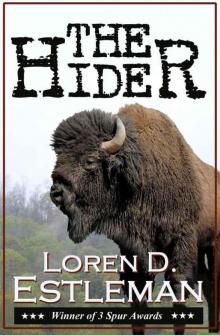 The Hider
The Hider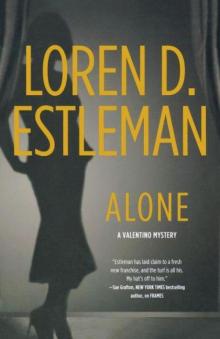 Alone
Alone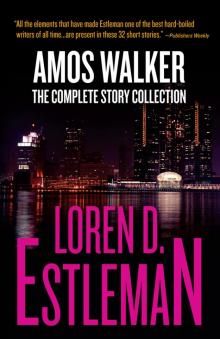 Amos Walker: The Complete Story Collection
Amos Walker: The Complete Story Collection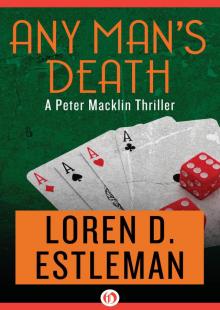 Any Man's Death
Any Man's Death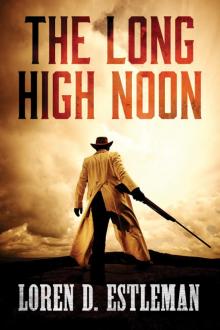 The Long High Noon
The Long High Noon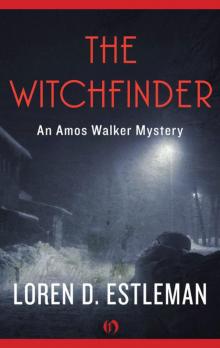 The Witchfinder
The Witchfinder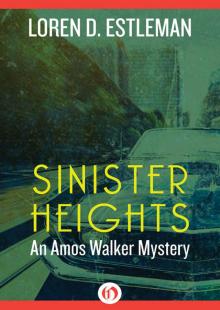 Sinister Heights
Sinister Heights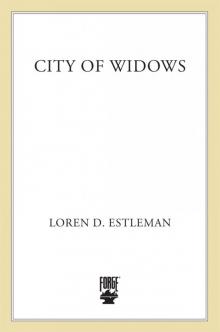 City of Widows
City of Widows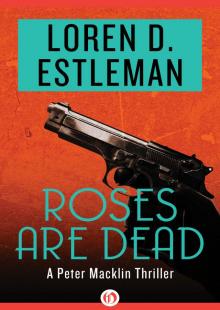 Roses Are Dead
Roses Are Dead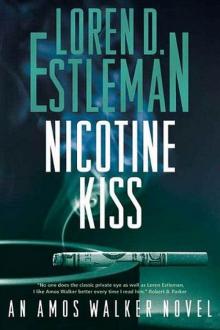 Loren D. Estleman - Amos Walker 18 - Nicotine Kiss
Loren D. Estleman - Amos Walker 18 - Nicotine Kiss